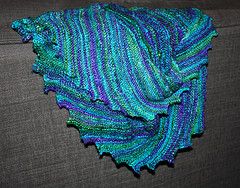From Guest Blogger Karen Boyarsky: Not All Fabric is Created Green

Hemp
Don’t mistake the hemp plant that yields fiber for textiles with the same plant that produces marijuana. While both plants are members of the same family, they are used in very different ways. The hemp cultivated for textiles is a fast growing, durable plant that requires no herbicides or pesticides to grow in abundance. The amazing thing about hemp is that it can be silky soft or incredibly strong, depending on how it is manufactured.
Silk
Most people who have adopted a green lifestyle avoid silk because producing just a single yard kills 1500 silkworms. If your aim is to avoid animal cruelty when you shop for clothing, you don’t have to give up the luxurious feel of silk. Ahimsa, or peace silk, is produced with cocoons that are gathered after the moths have flown away. This type of silk is not only friendly to the environment, but it supports the weavers and their communities as every bit of peace silk is handmade by local artisans.
Bamboo
Bamboo is an amazing plant that grows quickly without the use of pesticides or herbicides. It replenishes itself rapidly which means that its cultivation has no negative impact on the environment. Fabric made out of bamboo is naturally insulating, making it a fantastic fabric for clothing worn in every season. Bamboo is becoming a popular choice for more than fabric; flooring, window blinds and even wall trim made from this sturdy plant can be easily found.
Soy
You may know that you can buy food and milk made from soybeans, but did you know that you can purchase fabric made from soy fibers? Stronger than many traditional fabrics, soy is breathable, absorbent and quick to dry. While you may find it difficult to find organic soy fabric, even non-organic soy textiles are friendlier to the environment than many other fabrics. The reasoning behind this is that soy is renewable and the fabric is made from by-products of the process used to make tofu; meaning that very little of the plant is wasted.
Organic Cotton
Not to be confused with traditional cotton, organic cotton is an environmentally-friendly option used to make everything from printed tees, like those explained here, to fabulous bed linens. To be certified as organic, cotton must be grown in soil that has remained chemical-free for at least three years. Organic cotton is manufactured without chlorine bleach or chemical dyes that can irritate sensitive skin.
If you have recently gone green, make sure that you consider the fabrics that you use to clothe your body and cover your furniture. By being aware of the textiles that are environmentally-friendly you can reduce your carbon footprint significantly and, for those who have gone green, that’s what it’s all about.
– Karen Boyarsky is an avid blogger. You can follow her on Twitter @Boyarsky_kareni.
